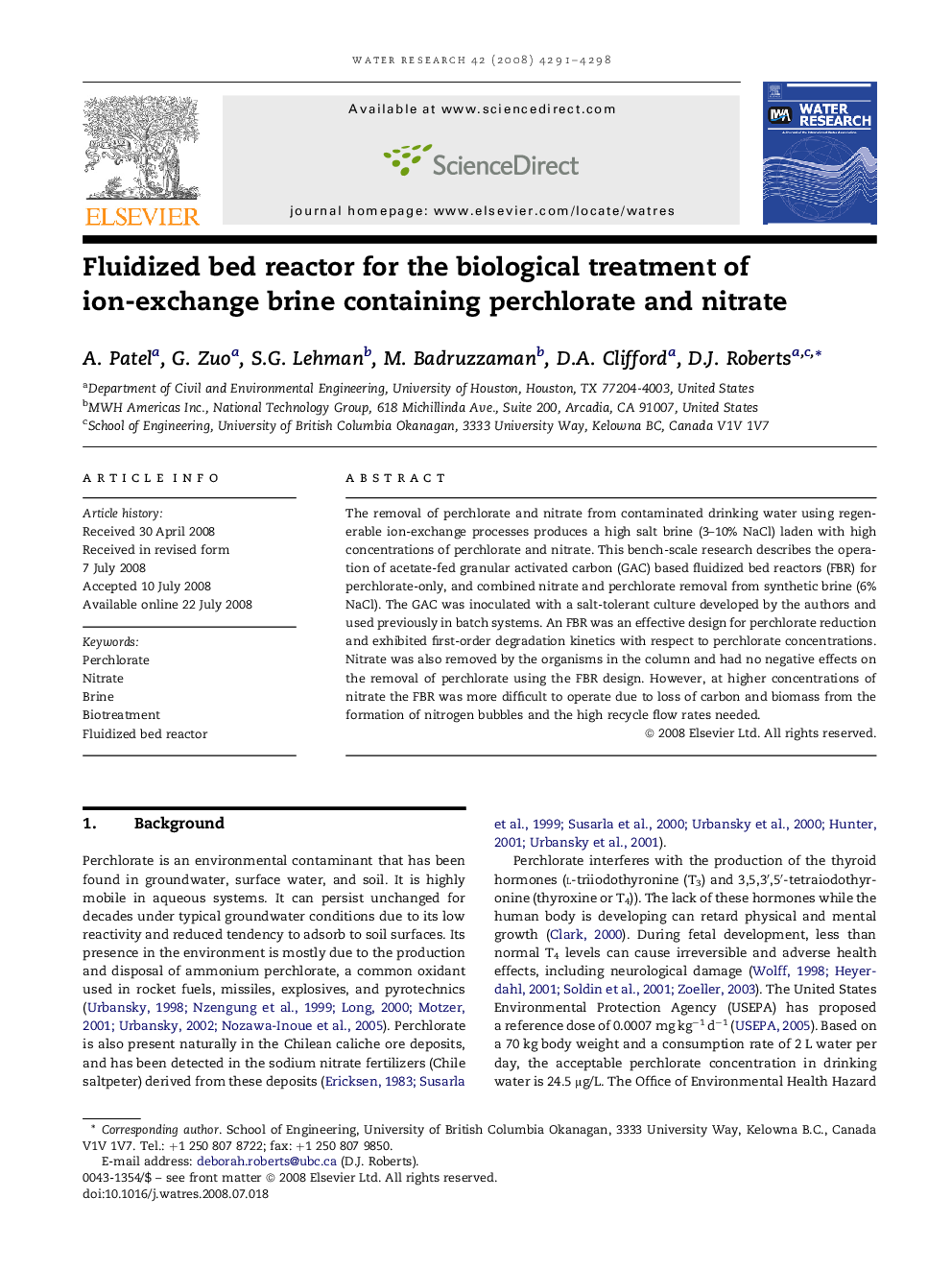| Article ID | Journal | Published Year | Pages | File Type |
|---|---|---|---|---|
| 4485797 | Water Research | 2008 | 8 Pages |
The removal of perchlorate and nitrate from contaminated drinking water using regenerable ion-exchange processes produces a high salt brine (3–10% NaCl) laden with high concentrations of perchlorate and nitrate. This bench-scale research describes the operation of acetate-fed granular activated carbon (GAC) based fluidized bed reactors (FBR) for perchlorate-only, and combined nitrate and perchlorate removal from synthetic brine (6% NaCl). The GAC was inoculated with a salt-tolerant culture developed by the authors and used previously in batch systems. An FBR was an effective design for perchlorate reduction and exhibited first-order degradation kinetics with respect to perchlorate concentrations. Nitrate was also removed by the organisms in the column and had no negative effects on the removal of perchlorate using the FBR design. However, at higher concentrations of nitrate the FBR was more difficult to operate due to loss of carbon and biomass from the formation of nitrogen bubbles and the high recycle flow rates needed.
